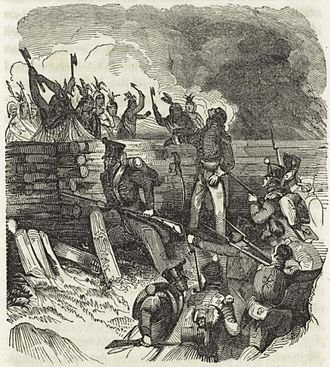Introduction
In the early 19th century, the United States was embroiled in conflicts with various Native American tribes. One such conflict was the Creek War, which took place from 1813 to 1814. At the center of this war was the Battle at Horseshoe Bend, a pivotal event that would shape the course of American history.
The Creek War and the Red Sticks
The Creek War was a civil war within the Creek Nation, a Native American tribe located in the southeastern United States. The war was fought between the Red Sticks, a faction of the Creek tribe who opposed American expansion, and the Lower Creek, who were more sympathetic to the United States.
The Red Sticks, named for the red war clubs they carried, were determined to resist American encroachment on their lands. They launched attacks on American settlements and allied with the British during the War of 1812. Their actions threatened the stability of the region and prompted a military response from the United States.
General Andrew Jackson and the American Forces
Leading the American forces in the Battle at Horseshoe Bend was General Andrew Jackson. Jackson, who would later become the seventh President of the United States, was known for his strong leadership and military acumen.
Under Jackson’s command, the American forces consisted of a diverse group of soldiers, including regular army troops, volunteers, and allied Native American tribes. Their goal was to defeat the Red Sticks and bring an end to the Creek War.
The Battle at Horseshoe Bend
On March 27, 1814, Jackson’s forces launched an attack on the Red Stick stronghold at Horseshoe Bend, near present-day Dadeville, Alabama. The battle was fierce and intense, with both sides fighting valiantly.
The American forces, utilizing superior tactics and firepower, eventually gained the upper hand. They surrounded the Red Stick fortification and launched a devastating assault. The Red Sticks, outnumbered and outgunned, were unable to withstand the onslaught.
After several hours of intense fighting, the Red Sticks were defeated. The battle resulted in a significant loss of life for both sides, but it was a decisive victory for the American forces. The Red Sticks’ resistance was effectively crushed, and the Creek War began to draw to a close.
The Aftermath and Significance
The Battle at Horseshoe Bend had far-reaching consequences. It marked the end of the Creek War and the defeat of the Red Sticks. The victory solidified Andrew Jackson’s reputation as a military leader and propelled him onto the national stage.
Furthermore, the battle led to the Treaty of Fort Jackson in August 1814, which forced the Creek Nation to cede millions of acres of land to the United States. This land would later become part of the states of Alabama and Georgia.
The Battle at Horseshoe Bend also had a profound impact on the Native American tribes of the southeastern United States. It weakened the Creek Nation and set the stage for further conflicts and forced removals of Native American tribes in the years to come.
Conclusion
The Battle at Horseshoe Bend was a turning point in the Creek War and a significant event in American history. General Andrew Jackson’s victory over the Red Sticks solidified his reputation as a military leader and helped shape the future of the United States.
Today, the battle is remembered as a testament to the bravery and sacrifice of those who fought on both sides. It serves as a reminder of the complex and often tragic history of Native American and American relations.
For more information about the Battle at Horseshoe Bend and its historical significance, you can visit the following external references:
- History.com: Battle of Horseshoe Bend
- National Park Service: Horseshoe Bend National Military Park
- Britannica: Battle of Horseshoe Bend

